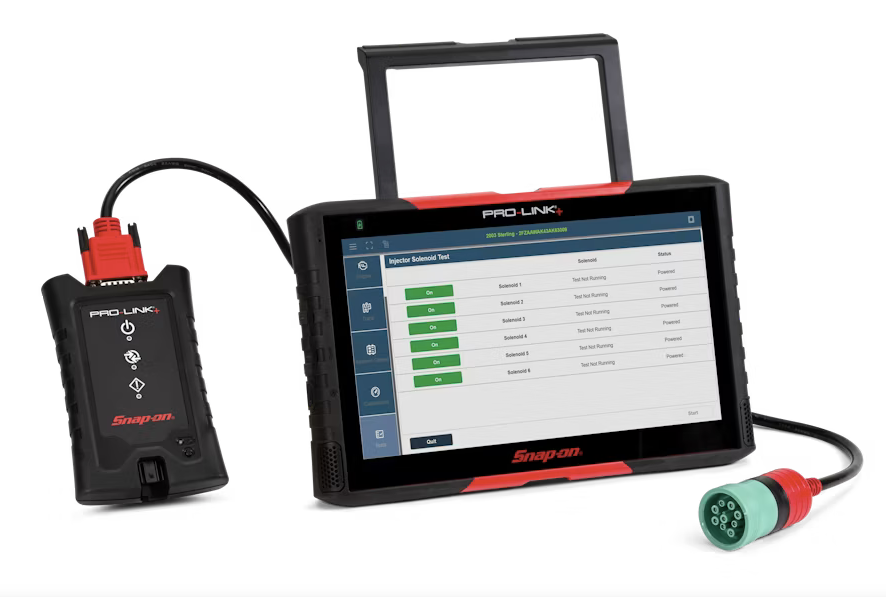As emissions rules tighten across North America, the backbone of fleet performance is shifting from brute power to data-driven precision. A new report tracking the electronic service tools (EST) market for medium and heavy-duty trucks reveals how OEMs like Cummins and Daimler, along with service leaders such as Snap-on, are driving a wave of innovation aimed at faster diagnostics, cleaner compliance and lower lifecycle costs writes FleetWatch correspondent Paul Collings.
The report, compiled by ResearchAndMarkets, forecasts a surge in electronic service tools (EST) across North America’s truck sector as OEMs and fleets respond to rising emissions pressure with smarter diagnostics and cloud-based maintenance systems.
For Southern African truck operators, the implications are clear: as cleaner engines enter the market, the tools to keep them running efficiently must keep pace.
According to the report: “The real-world challenges faced by EV trucks have rendered heavy-duty EVs currently impractical. As a result, fleets are increasingly opting for alternative fuel engines, necessitating the development of new and more complex diagnostics tools, resulting in significant technological disruptions.”
Integrating compliance with service cost optimisation
The report, which tracks trends from 2025 to 2030, highlights how manufacturers like Cummins, Daimler and Snap-on are equipping workshops with modular, software-driven systems that handle everything from real-time fault detection to emissions calibration. These tools are fast becoming essential for maintaining compliance under stricter EPA limits and may soon be just as relevant for operators this side of the equator.
The report notes that from 2025 to 2030, the North American market is expected to see sharp growth in cloud-based diagnostic platforms, modular tooling systems and predictive maintenance software. Much of this is fuelled by stricter environmental regulations (like the EPA’s Phase 3 emissions standards), which demand not just cleaner engines, but smarter service ecosystems.
The latest ESTs help technicians monitor exhaust systems, run emissions tests, apply software updates and identify faults before they become failures, all in real time.
For Southern African truck fleets, the shift offers both a warning and an opportunity. While diesel remains dominant across the region, regulatory pressure is mounting, especially in the long-haul, mining and urban freight sectors.
As alternative fuels like CNG, LNG and hydrogen begin to enter the picture, service tools that can handle diverse platforms will become essential, not just for compliance, but for keeping trucks on the road.
Smart tools to service fuel-agnostic engines
The report highlights how engine manufacturers are building fuel-agnostic EST compatibility, allowing a single diagnostic suite to support diesel, gas and hydrogen engines alike. That’s particularly relevant for future platforms like the Cummins X15H and Volvo’s H2 ICE truck engine, which promise lower emissions without abandoning internal combustion. For fleet managers weighing the cost of clean-energy transition, this backward-compatible service model could be the bridge they need.
In Southern Africa, truck workshops are under immense pressure, both technically in terms of skills and logistically due to supply chain disruptions. Investing in the right diagnostic technology now could future-proof service networks, streamline repairs and unlock cleaner powertrain options down the line. What’s happening in the North isn’t just a market trend – it’s a signal of what’s coming next.
Click on photographs to enlarge.





